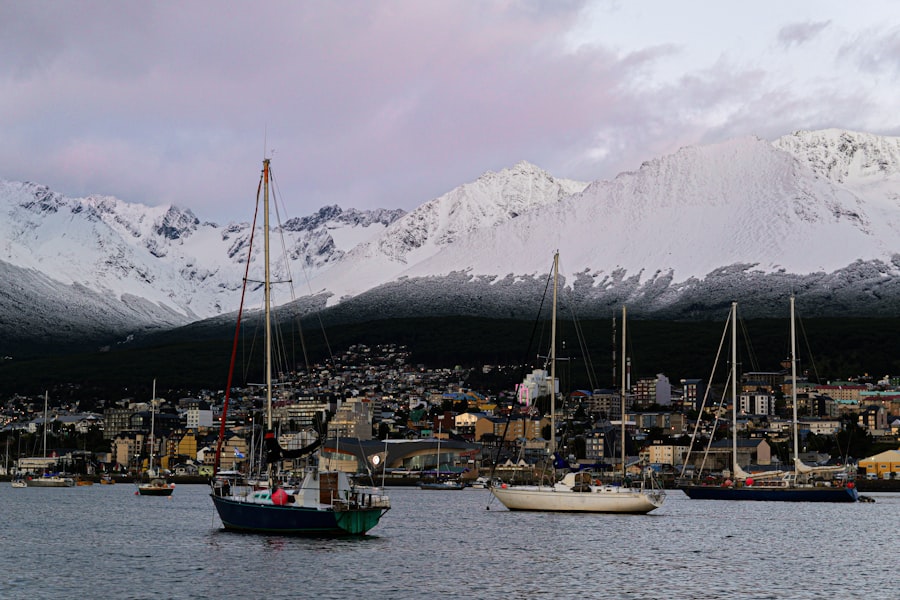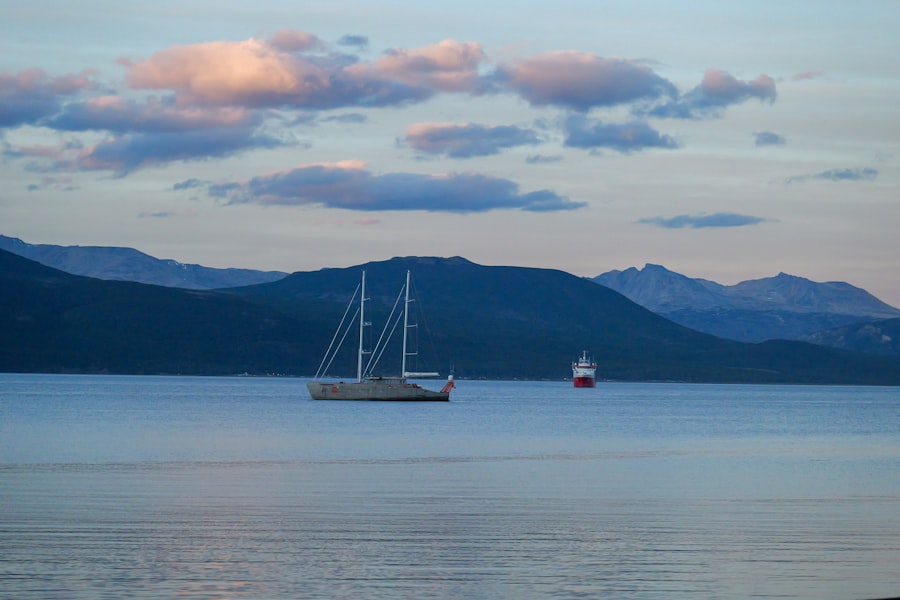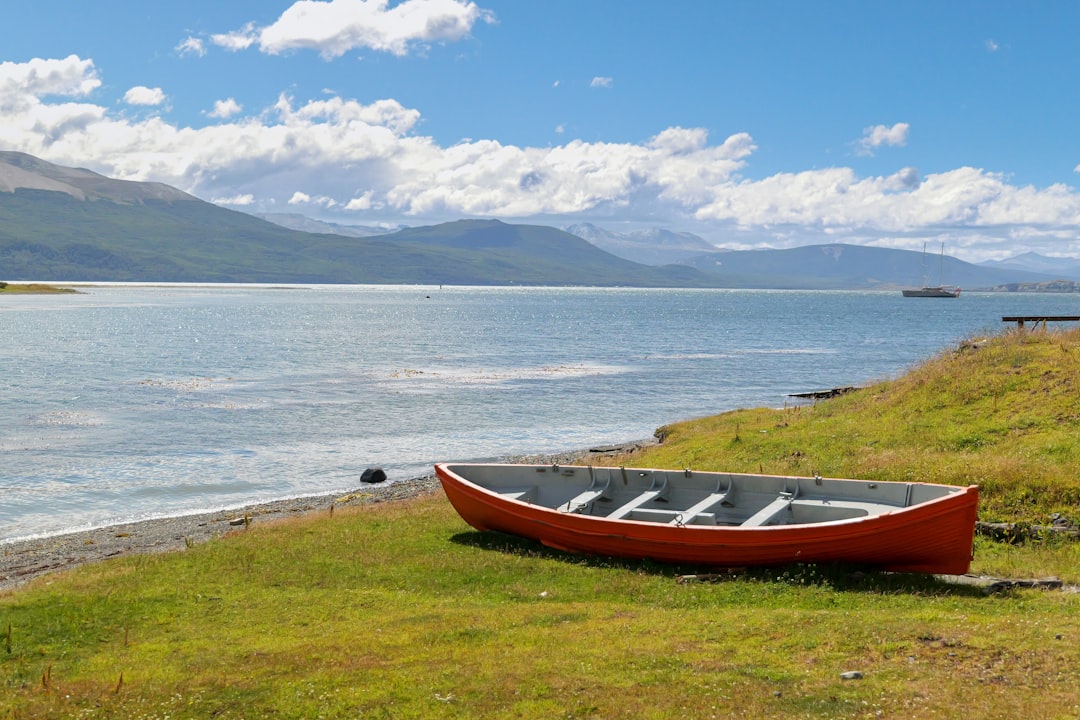The Beagle Channel and the Drake Passage are two significant maritime routes located at the southern tip of South America, each with its own unique characteristics and challenges.
Both waterways are not only vital for navigation but also rich in biodiversity and steeped in historical significance.
Their geographical features and climatic conditions make them intriguing subjects for exploration and study. The Beagle Channel and the Drake Passage have long captured the imagination of sailors, explorers, and scientists alike. The Beagle Channel, named after the HMS Beagle, which famously carried Charles Darwin on his voyage of discovery, is a crucial passage for vessels traveling to and from the ports of Ushuaia in Argentina and Puerto Williams in Chile.
In contrast, the Drake Passage is often regarded as one of the most challenging maritime routes in the world due to its unpredictable weather patterns and strong currents. Together, these waterways represent a gateway to some of the most remote and pristine environments on Earth.
Key Takeaways
- The Beagle Channel and Drake Passage are important waterways in the southern tip of South America, connecting the Pacific and Atlantic Oceans.
- The Beagle Channel is a natural strait separating the main island of the Tierra del Fuego from various smaller islands to the south.
- The Drake Passage is the body of water between the southern tip of South America and the South Shetland Islands of Antarctica.
- The Beagle Channel experiences a cold, temperate climate with strong winds and frequent precipitation, while the Drake Passage is known for its rough seas and strong winds due to the convergence of the Atlantic, Pacific, and Southern Oceans.
- Navigating the Beagle Channel presents challenges such as narrow passages, strong currents, and unpredictable weather, while the Drake Passage is known for its notorious reputation for rough seas and extreme weather conditions.
Geographic Location and Characteristics of the Beagle Channel
The Beagle Channel is situated at approximately 55 degrees south latitude, flanked by the southern coast of Tierra del Fuego to the north and various islands to the south. This narrow channel stretches about 240 kilometers (150 miles) from the Atlantic Ocean to the Pacific Ocean, connecting these two vast bodies of water. Its width varies significantly, with some sections measuring only a few kilometers across.
The channel is dotted with numerous islands, including Navarino Island and Hoste Island, which contribute to its complex geography. The Beagle Channel is characterized by its rugged terrain, steep cliffs, and lush vegetation that thrives in the temperate climate of the region. The waters of the channel are relatively calm compared to those of the Drake Passage, making it a more navigable route for vessels.
The channel’s unique geography also creates a rich habitat for various marine species, including seals, dolphins, and a diverse array of seabirds. The surrounding landscape is equally captivating, featuring snow-capped mountains, dense forests, and pristine fjords that draw adventurers and nature enthusiasts from around the globe.
Geographic Location and Characteristics of the Drake Passage

The Drake Passage lies to the south of the Beagle Channel, extending approximately 800 kilometers (500 miles) between Cape Horn at the southern tip of South America and Antarctica. This body of water is renowned for its rough seas and strong currents, making it one of the most formidable maritime passages in existence. The passage is often described as a convergence zone where the Atlantic and Pacific Oceans meet, resulting in turbulent waters that can pose significant challenges for navigation.
Geographically, the Drake Passage is defined by its deep waters and steep underwater topography. The continental shelf drops off sharply into deep oceanic trenches, creating conditions that can lead to sudden changes in weather and sea state. The passage is also home to various islands, including the South Shetland Islands and South Georgia, which serve as important waypoints for vessels traveling to Antarctica.
The unique geographical features of the Drake Passage contribute to its reputation as a wild and unpredictable maritime environment.
Weather and Climate in the Beagle Channel
| Month | Average Temperature (°C) | Precipitation (mm) | Wind Speed (km/h) |
|---|---|---|---|
| January | 10 | 50 | 20 |
| February | 10 | 40 | 25 |
| March | 8 | 60 | 30 |
| April | 5 | 80 | 35 |
| May | 3 | 90 | 40 |
The climate in the Beagle Channel is classified as subpolar oceanic, characterized by mild temperatures and high levels of precipitation throughout the year. The region experiences relatively stable weather patterns compared to other areas in southern Patagonia. Average temperatures range from 5°C (41°F) in winter to around 15°C (59°F) in summer, making it a relatively temperate environment despite its southern latitude.
Rainfall is frequent in the Beagle Channel, with annual precipitation often exceeding 2,000 millimeters (79 inches). This abundant moisture supports lush vegetation along the shores and contributes to the region’s stunning natural beauty. Fog is also common in this area, particularly during the summer months when warm air meets cooler ocean waters.
These weather conditions create a unique microclimate that supports diverse ecosystems both on land and in the surrounding waters.
Weather and Climate in the Drake Passage
In stark contrast to the Beagle Channel, the Drake Passage is notorious for its extreme weather conditions. The climate here is classified as polar maritime, characterized by strong winds, heavy seas, and rapidly changing weather patterns. The average temperature ranges from -2°C (28°F) in winter to 8°C (46°F) in summer; however, conditions can vary dramatically within a single day.
The passage is particularly known for its fierce storms that can arise with little warning. Winds can reach speeds of over 100 kilometers per hour (62 miles per hour), creating towering waves that can exceed 10 meters (33 feet) in height. These tumultuous conditions make navigation through the Drake Passage a daunting task for even the most experienced mariners.
The unpredictable weather patterns are influenced by various factors, including ocean currents and atmospheric pressure systems, which contribute to its reputation as one of the most challenging maritime routes in the world.
Navigational Challenges in the Beagle Channel

Navigating through the Beagle Channel presents its own set of challenges despite its relatively calm waters compared to other maritime routes. One significant challenge is the presence of numerous islands and rocks that can create hazards for vessels. Mariners must be vigilant in their navigation to avoid running aground or colliding with submerged obstacles.
The narrowness of certain sections of the channel further complicates navigation, requiring precise maneuvering and careful planning. Additionally, strong tidal currents can affect vessel speed and direction within the channel. These currents can change rapidly depending on local weather conditions and tidal cycles, making it essential for navigators to stay informed about current conditions.
Fog can also pose a significant challenge, reducing visibility and making it difficult for vessels to maintain their bearings. As such, navigating through the Beagle Channel requires a combination of skill, experience, and an understanding of local conditions.
Navigational Challenges in the Drake Passage
The Drake Passage is infamous for its navigational challenges due to its unpredictable weather patterns and treacherous sea conditions. One of the primary difficulties faced by mariners is the strong currents that flow through this body of water. The confluence of ocean currents from both the Atlantic and Pacific Oceans creates turbulent waters that can change rapidly, leading to dangerous situations for vessels attempting to traverse this passage.
Navigators must be prepared for these abrupt changes in weather and have contingency plans in place to ensure safety during their journey. The passage’s remoteness also means that assistance may not be readily available in case of emergencies, adding an additional layer of risk for those who dare to navigate these challenging waters.
Wildlife and Scenery in the Beagle Channel
The Beagle Channel is renowned for its stunning scenery and rich biodiversity. The surrounding landscape features dramatic mountains, lush forests, and pristine fjords that create a breathtaking backdrop for any voyage through this waterway. The channel’s unique geography provides habitats for various wildlife species, making it a prime location for nature enthusiasts and wildlife watchers.
Marine life thrives in the Beagle Channel’s nutrient-rich waters. Visitors may encounter playful sea lions basking on rocky shores or pods of dolphins frolicking alongside boats. The channel is also home to numerous seabird species, including albatrosses and cormorants, which can often be seen soaring above the water or diving for fish.
The combination of stunning scenery and diverse wildlife makes a journey through the Beagle Channel an unforgettable experience for those who venture into this remarkable region.
Wildlife and Scenery in the Drake Passage
While often overshadowed by its reputation for rough seas, the Drake Passage also boasts remarkable wildlife and stunning scenery that captivates those who traverse its waters. The passage serves as a migratory route for various marine species, including whales such as humpbacks and orcas that can be spotted during certain times of the year. These majestic creatures often breach the surface or engage in playful behavior that delights observers on passing vessels.
The scenery surrounding the Drake Passage is equally awe-inspiring. Icebergs calve from glaciers on nearby Antarctic landmasses, creating a surreal landscape of floating ice that contrasts sharply with the deep blue waters below. The stark beauty of this remote region draws adventurers seeking to experience one of Earth’s last great wildernesses.
Despite its challenges, navigating through the Drake Passage offers an opportunity to witness nature’s raw power and beauty firsthand.
Safety Considerations for Navigating the Beagle Channel
Safety is paramount when navigating through the Beagle Channel due to its unique challenges. Mariners must be well-versed in local navigation charts and aware of potential hazards such as submerged rocks and shifting tides. It is essential to have up-to-date information on weather conditions before embarking on a journey through this waterway.
Additionally, vessels should be equipped with appropriate safety gear, including life jackets, flares, and communication devices capable of reaching emergency services if needed. Regular maintenance checks on equipment are crucial to ensure reliability during navigation. Mariners should also consider traveling with experienced crew members familiar with local conditions to enhance safety during their journey through this beautiful yet challenging channel.
Safety Considerations for Navigating the Drake Passage
Navigating through the Drake Passage requires careful planning and consideration due to its notorious reputation for rough seas and unpredictable weather patterns. Mariners must be equipped with reliable navigation tools and up-to-date charts that account for changing currents and potential hazards within this challenging body of water. Safety gear is essential when traversing the Drake Passage; vessels should carry life rafts, emergency beacons, and sufficient provisions for all crew members onboard.
It is advisable to monitor weather forecasts closely before setting sail since conditions can change rapidly within hours. Experienced crew members who understand how to handle adverse weather conditions can significantly enhance safety during navigation through this formidable passage. In conclusion, both the Beagle Channel and Drake Passage present unique opportunities for exploration while posing significant navigational challenges due to their geographical features and climatic conditions.
Understanding these waterways’ characteristics is essential for ensuring safe passage while appreciating their breathtaking beauty and rich biodiversity.
The Beagle Channel and Drake Passage are two significant waterways in the southern tip of South America, each offering unique navigational challenges and breathtaking scenery. While the Beagle Channel is known for its calm waters and stunning views of the surrounding mountains and glaciers, the Drake Passage is infamous for its rough seas and unpredictable weather, making it a thrilling route for adventurous sailors. For those interested in exploring more about these fascinating maritime routes, a related article can be found on
